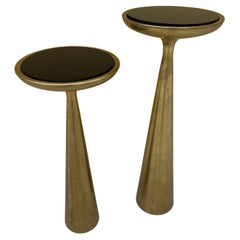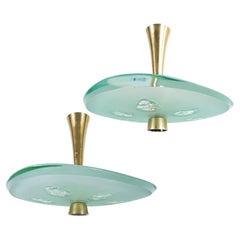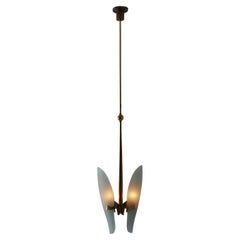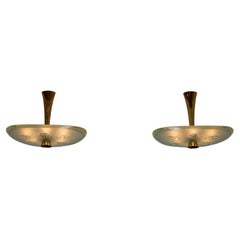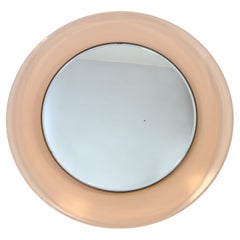Max Ingrand
| Average Sold Price |
| $10,353 |
| Styles |
| Materials |
| Related Creators |
Iconic Designs from Max Ingrand
Explore timeless pieces that have earned their place in history.

Max Ingrand Glass Drop Pendant Model 2259
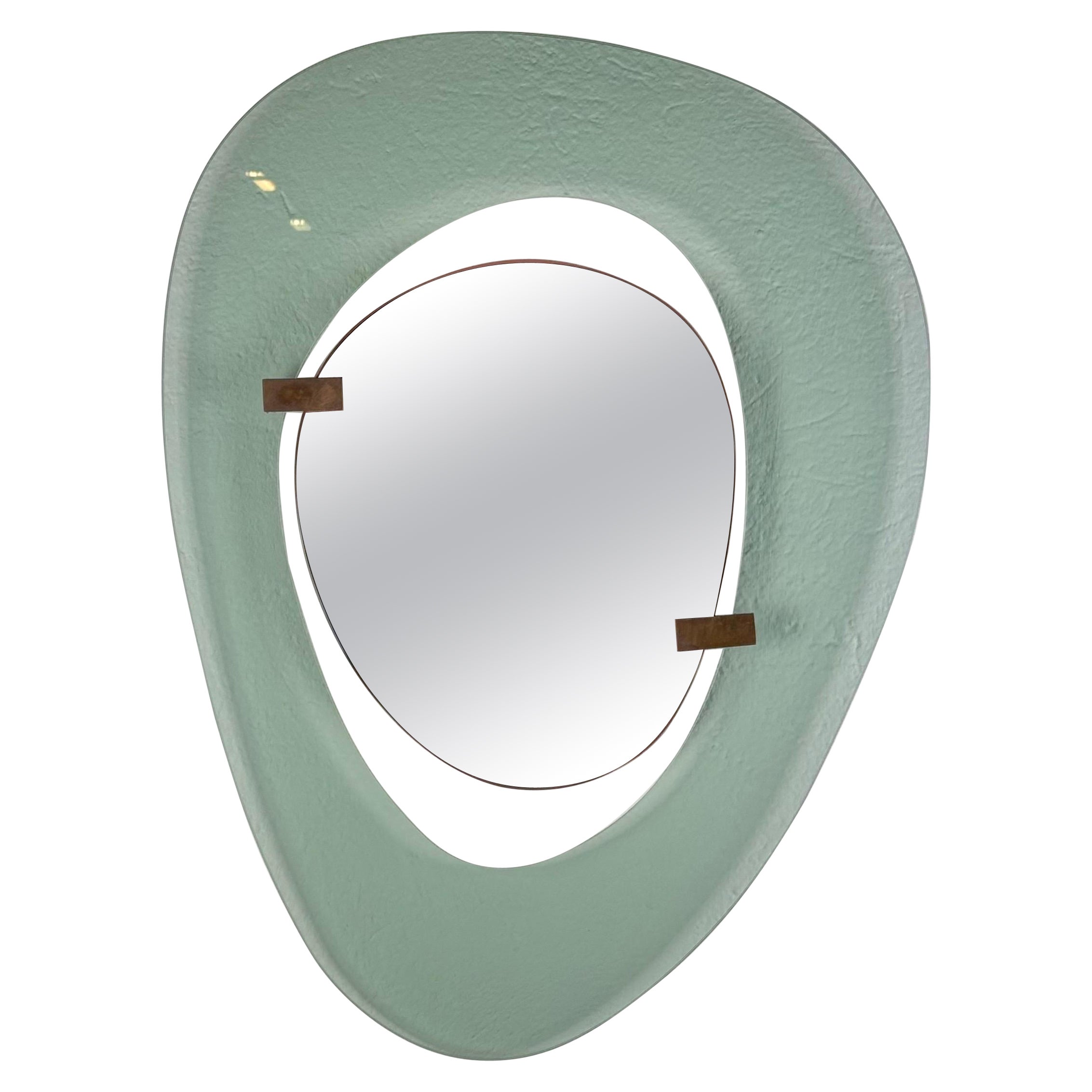
Pendant Model 1933
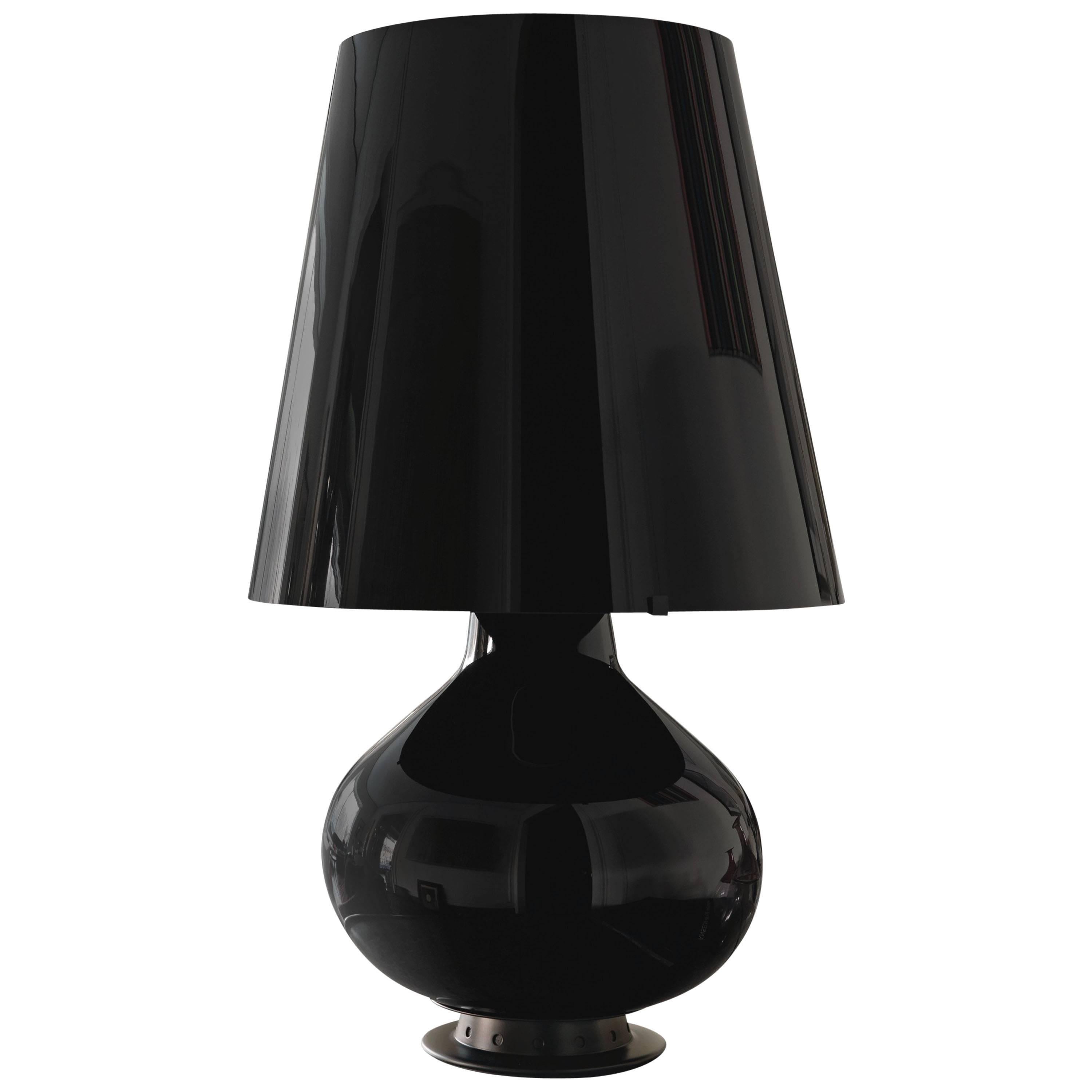
Max Ingrand Fontana Table Lamp
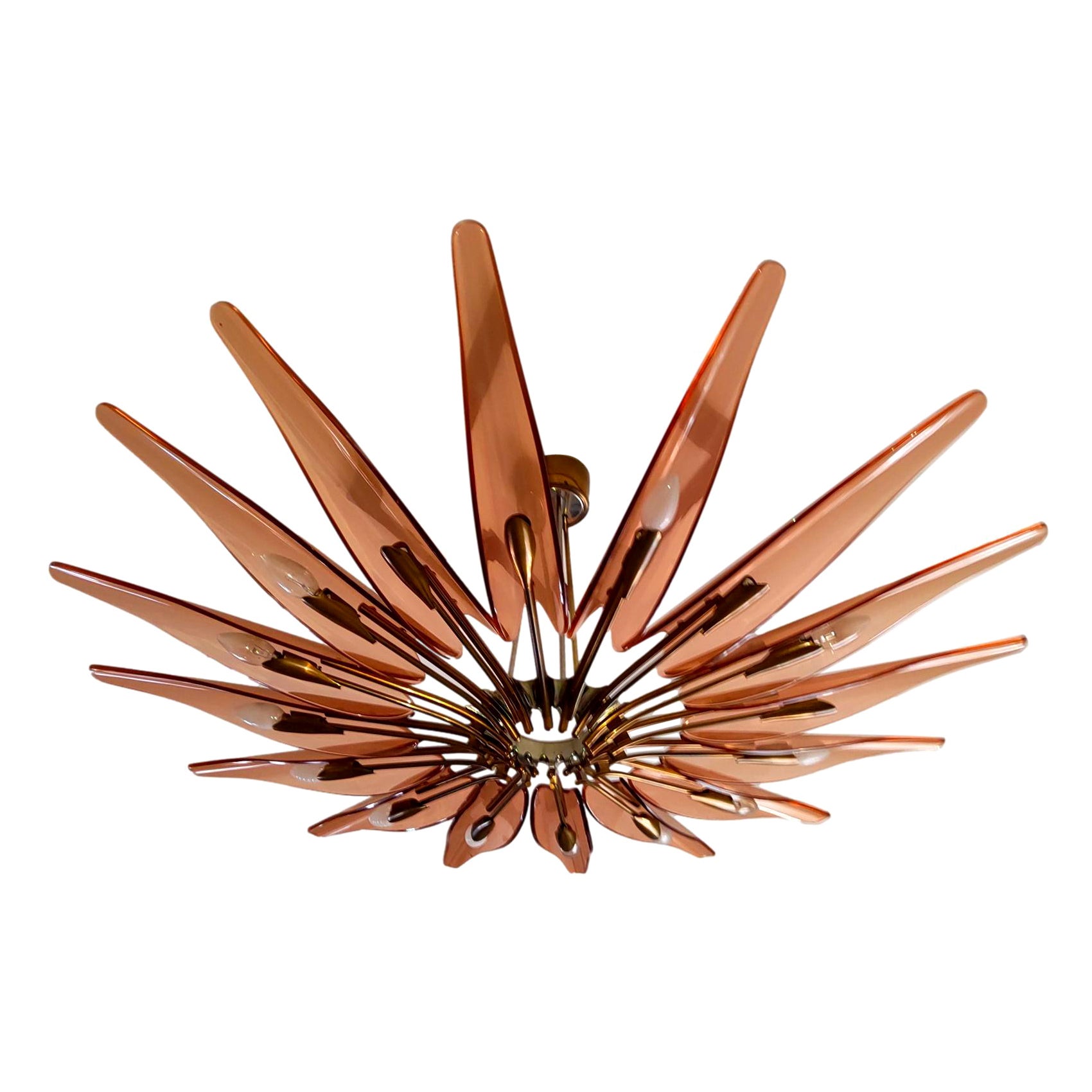
Max Ingrand Dahlia Chandelier
Set of model "1776" brass and opaline side tables, Fontana Arte, Italy, 1965.
By Max Ingrand, Fontana Arte
Located in Paris, Ile-de-France
A rare set of 2 " 1776" side tables.
The heavy foot is made in brass ballasted inside by cast metal to give it great stability. The tray made of black opaline glass.
Both tables a...
Category
1960s Italian Mid-Century Modern Vintage Max Ingrand
Materials
Brass
$17,466
H 25.6 in Dm 10.24 in
Max Ingrand for Fontana Arte Wall Sconces Model #2135
By Max Ingrand, Fontana Arte
Located in Chicago, IL
Satin glass panels of natural glass on the face and pale blue glass on the sides with polished brass structures and metal interior structure..Max Ingrand for Fontana Arte Model #2125...
Category
1960s Italian Mid-Century Modern Vintage Max Ingrand
Materials
Brass
Max Ingrand Fontana Arte Semi Flush Mount Chandelier Mod. 1462 Glass Brass, 1960
By Max Ingrand, Fontana Arte
Located in Vienna, AT
Rare original Max Ingrand Fontana Arte semi flush mount Mod. 1642
Beautiful 28" ceiling fixture from blue-ish polished and satin glass, partially with clear and satin finish and smo...
Category
1960s Italian Mid-Century Modern Vintage Max Ingrand
Materials
Brass
$24,800
H 20.86 in Dm 28 in
Max Ingrand Fontana Arte Large Glass Flush Mount, Italy, Mid-Century Modern
By Max Ingrand, Fontana Arte
Located in Vienna, AT
Very rare 36.6" semi glass flush-mount with deep incisions, Max Ingrand for Fontana Arte, Milano circa 1955
Early vintage original flush mount light by Max Ingrand. Iconic large fix...
Category
1950s Italian Mid-Century Modern Vintage Max Ingrand
Materials
Brass
$43,000
H 11.8 in Dm 36.6 in
Fontana Arte Max Ingrand. N. 4 Appliques Metal Nichelato Glass 1955 Italy
By Max Ingrand
Located in Milano, IT
ECCEZIONALE GRUPPO DI QUATTRO APPLIQUES FONTANA ARTE MAX INGRAND IN METALLO NICHELATO E VETRO DEL 1955 in Buono stato..provenienti da un appartamento in via Manzoni....
Category
1950s Italian Other Vintage Max Ingrand
Materials
Glass
$10,730 / set
H 8.67 in W 4.73 in D 5.91 in
Ceiling Pendant by Max Ingrand
By Max Ingrand
Located in Los Angeles, CA
Ceiling pendant by Max Ingrand for Fontana Arte, circa 1960s. Known for his refined use of glass and light, this piece features etched crystal and brass details that reflect his sign...
Category
1960s Italian Mid-Century Modern Vintage Max Ingrand
Materials
Brass
Max Ingrand Fontana Arte Semi Flush Mount Chandelier Mod. 1748 Glass Brass, 1957
By Max Ingrand, Fontana Arte
Located in Vienna, AT
Max Ingrand Fontana Arte semi flush mount Mod. 1748, Italy, 1957.
We have 2 pieces available. Both are in good condition and look wonderful as a set.
Two beautiful 22" ceiling fixt...
Category
1950s Italian Mid-Century Modern Vintage Max Ingrand
Materials
Brass
$24,000 / item
H 16.92 in W 22 in D 22 in
Rare Asymmetrical Light Blue Mirror by Max Ingrand for Fontana Arte, Italy, 1958
By Max Ingrand, Fontana Arte
Located in Bagnolo Mella, Brescia
A rare and exquisite asymmetrical wall mirror designed by Max Ingrand for Fontana Arte in 1958, epitomizing the refined craftsmanship and innovation of mid-century Italian design.
T...
Category
1950s Italian Mid-Century Modern Vintage Max Ingrand
Materials
Brass
$13,460
H 30.71 in W 22.84 in D 1.58 in
Browse all Furniture from Max Ingrand
Shop NowPopular Searches
Max Ingrand Sale Prices
This data represents a recent sample of sales made on 1stDibs during the specified years. All sales are anonymized.
| Sold Date | Sold Price | Category | Material | Creation Year | ||||||||||||||||||||||||||||||||||||||||||||||||||||||||||||||||||||||||||||||||||||||||||||||||
|
| $10,353 |
Average sold price of items in the past 12 months |
| $1,045-$78,891 |
| Sold price range of items in the past 12 months |
Creators Similar to Max Ingrand
More Max Ingrand Designs

Max Ingrand Glass Drop Pendant Model 2259
Average Price
$18,590
Number Available
7
Max Ingrand Glass Drop Pendant Model 2259
By Max Ingrand
Materials
Brass, Glass, Metal
Styles
Mid Century Modern
Combat operations during World War II destroyed the stained-glass windows of churches around France. Max Ingrand (1908–69), a French designer who spent time as a POW, would become a leader in their restoration and, in turn, bring his expressive vision to some of the most inventive postwar glass objects, including the striking 1962 Glass Drop Pendant model 2259.
Born in Bressuire, Ingrand spent some of his childhood in Chartres, where he was drawn to the medieval stained glass in the city’s fa...

Pendant Model 1933
Average Price
$17,605
Number Available
6
Pendant Model 1933
By Max Ingrand
Materials
Glass, Metal, Brass, Murano Glass
Styles
Mid Century Modern

Max Ingrand Fontana Table Lamp
Average Price
$5,730
Number Available
6
Max Ingrand Fontana Table Lamp
By Max Ingrand
Materials
Glass, Metal, Blown Glass
Styles
Mid Century Modern
In his first year as artistic director at the Milanese design house Fontana Arte (founded by Giò Ponti and Luigi Fontana) in 1954, French glass artist Max Ingrand (1908–69), who had made a mark in his native country creating detailed stained-glass windows for cathedrals including Notre-Dame de Paris, devised a stunningly minimal table lamp. The Fontana light would go on to be one of both Ingrand and Fontana Arte’s most recognizable creations — and indeed one of the most influential lamps in d...

Max Ingrand Dahlia Chandelier
Average Price
$34,886
Number Available
6
Max Ingrand Dahlia Chandelier
By Max Ingrand
Materials
Brass, Glass, Metal, Murano Glass, Stained Glass
Styles
Mid Century Modern
Max Ingrand furniture for sale on 1stDibs.
Max Ingrand furniture are available for sale on 1stDibs. These distinctive items are frequently made of glass and are designed with extraordinary care. There are many options to choose from in our collection of Max Ingrand furniture, although beige editions of this piece are particularly popular. We have 412 vintage editions of these items in-stock, while there is 5 modern edition to choose from as well. Many of the original furniture by Max Ingrand were created in the mid-century modern style in europe during the 20th century. If you’re looking for additional options, many customers also consider furniture by Arteluce, Luigi Caccia Dominioni, and Gino Sarfatti. Prices for Max Ingrand furniture can differ depending upon size, time period and other attributes — on 1stDibs, these items begin at $723 and can go as high as $105,407, while a piece like these, on average, fetch $12,413.
Recently Viewed
View AllMore Max Ingrand Furniture
Max Ingrand Chandeliers and Pendants
Max Ingrand Wall Lights and Sconces
Max Ingrand Wall Mirrors
Max Ingrand Table Lamps
Max Ingrand Flush Mount
Max Ingrand Coffee and Cocktail Tables
Max Ingrand Floor Lamps
Max Ingrand Bowls and Baskets
Max Ingrand Vases and Vessels
Max Ingrand Ashtrays
Max Ingrand Desk Accessories
Max Ingrand Side Tables
